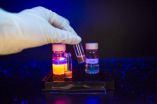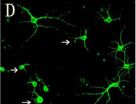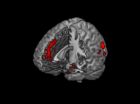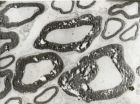(Press-News.org) A team of researchers from the National University of Singapore (NUS) has developed the world's first fluorescent sensor to identify the presence of a drug known as GHB that is commonly used to spike beverages. When the sensor is mixed with a sample of a beverage containing GHB, the mixture changes colour in less than 30 seconds, making detection of the drug fast and easy.
This simple mix-and-see discovery, led by Professor Chang Young-Tae of the Department of Chemistry at the NUS Faculty of Science, is a novel scientific breakthrough that contributes towards prevention of drug-facilitated sexual assault problems.
The findings were first published in the journal Chemical Communications earlier this year.
GHB: notorious drug used in drink spiking
Gamma-hydroxybutyric acid, commonly known as GHB, is a central nervous system depressant that has been used in the medical setting as a general anaesthetic. In the 1990s, it gained notoriety as a drug allegedly used in instances of drink spiking. Today, it is one of the most commonly used date rape drugs, rendering the victim incapacitated and vulnerable to sexual assault.
As GHB is odourless, colourless and slightly salty, it is almost undetectable when mixed in a drink, thus making it desirable to sexual predators. A small amount of between two to four grams of GHB will interfere with the motor and speech control of a person, and may even induce a coma-like sleep. GHB takes effect within 15 to 30 minutes, and the effect can last for three to six hours. It is only detectable in urine six to 12 hours after ingestion.
Novel fluorescent sensor to detect GHB
Fluorescent dyes have been widely used as sensors for analytical purposes because of their high sensitivity, fast response time and technical simplicity.
Under the supervision of Prof Chang, the team of researchers, comprising Dr Zhai Duanting, a Research Fellow, Mr Xu Wang, a PhD candidate, as well as Mr Elton Tan, a recent graduate, of the Department of Chemistry at the NUS Faculty of Science, screened 5,500 dyes generated from different fluorescent scaffolds. These fluorescent scaffolds have been used to construct the Diversity Oriented Fluorescence Library (DOFL) that was developed by Prof Chang over the last decade.
The team shortlisted 17 fluorescent compounds and further tested them with a wide range of different GHB concentrations. Through this, the team identified that an orange fluorescent compound, coined GHB Orange, changes colour when it is mixed with GHB.
In order to examine the efficiency of GHB Orange, the team tested its detection capability by mixing a small amount of it with samples of various beverages, ranging from alcoholic, non-alcoholic, coloured and colourless drinks, which contain GHB. The test revealed differences in the fluorescence intensity between GHB-free and GHB-spiked beverages. For drinks that are translucent or of a light colour, such as water or vodka, the change in colour can be easily detected with the naked eye. The change in the colour of darker drinks, such as Cola and whiskey, requires the aid of additional lighting to better detect the change.
Remarkably, this detection can be done through a simple mix-and-see process, which takes less than 30 seconds.
Future plans
While GHB Orange has proven to be efficient in detecting GHB in beverages, there is a need to develop a test kit that is convenient for users to use and carry around. Prof Chang and his team intend to work with industry partners to develop a handy and cheap device for GHB detection.
INFORMATION: END
NUS researchers developed world's first fluorescent sensor to detect date rape drug
2014-03-28
ELSE PRESS RELEASES FROM THIS DATE:
More male fish 'feminized' by pollution on the Basque coast
2014-03-28
The UPV/EHU's Cell Biology in Environmental Toxicology group has conducted research using thick-lipped grey mullet and has analysed specimens in six zones: Arriluze and Gernika in 2007 and 2008, and since then, Santurtzi, Plentzia, Ondarroa, Deba and Pasaia. The acquisition of feminine features by male fish has been detected, to a greater or lesser extent, in all the estuaries, not only in the characteristics of the gonads of the specimens analysed but also in various molecular markers. According to Miren P. Cajaraville, director of the research group, the results show ...
Fingerprint of dissolved glycine in the Terahertz range explained
2014-03-28
Chemists at the Ruhr-Universität Bochum (RUB) have, for the first time, completely analysed the fingerprint region of the Terahertz spectrum of a biologically relevant molecule in water, in this case, an amino acid. By combining spectroscopy and molecular-dynamics simulations, they rendered the motion of the most basic amino acid, glycine, visible in an aqueous solution. Their results have disproved the long-standing theory that frequencies in the Terahertz range provide no information regarding the amino acid's motion. The team led by Prof Dr Martina Havenith-Newen and ...
Aspartic acid in the hippocampus: A biomarker for postoperative cognitive dysfunction
2014-03-28
Postoperative cognitive dysfunction is the deterioration of cognitive performance after anesthesia and surgery, and manifests as impairments in short-term memory, concentration, language comprehension, and social integration skills. Previous studies have shown that the occurrence of postoperative cognitive dysfunction is affected by many factors, including advanced age, low educational level, pre-existing cognitive impairment, alcohol abuse, and severity of coexisting illness. However, the real cause for postoperative cognitive dysfunction is still unclear. Metabolite changes ...
Ancient African cattle first domesticated in Middle East, MU study reveals
2014-03-28
COLUMBIA, Mo. – Geneticist and anthropologists previously suspected that ancient Africans domesticated cattle native to the African continent nearly 10,000 years ago. Now, a team of University of Missouri researchers has completed the genetic history of 134 cattle breeds from around the world. In the process of completing this history, they found that ancient domesticated African cattle originated in the "Fertile Crescent," a region that covered modern day Iraq, Jordan, Syria and Israel.
Lead researcher Jared Decker, an assistant professor of animal science in the MU ...
Religion, spirituality influence health in different but complementary ways
2014-03-28
CORVALLIS, Ore. – Religion and spirituality have distinct but complementary influences on health, new research from Oregon State University indicates.
"Religion helps regulate behavior and health habits, while spirituality regulates your emotions, how you feel," said Carolyn Aldwin, a gerontology professor in the College of Public Health and Human Sciences at OSU.
Aldwin and colleagues have been working to understand and distinguish the beneficial connections between health, religion and spirituality. The result is a new theoretical model that defines two distinct pathways. ...
Brain scans link concern for justice with reason, not emotion
2014-03-28
People who care about justice are swayed more by reason than emotion, according to new brain scan research from the University of Chicago Department of Psychology and Center for Cognitive and Social Neuroscience.
Psychologists have found that some individuals react more strongly than others to situations that invoke a sense of justice—for example, seeing a person being treated unfairly or mercifully. The new study used brain scans to analyze the thought processes of people with high "justice sensitivity."
"We were interested to examine how individual differences about ...
Researchers identify good bacteria that protects against HIV
2014-03-28
Researchers at the University of Texas Medical Branch at Galveston by growing vaginal skin cells outside the body and studying the way they interact with "good and bad" bacteria, think they may be able to better identify the good bacteria that protect women from HIV infection and other sexually transmitted infections.
The health of the human vagina depends on a symbiotic/mutually beneficial relationship with "good" bacteria that live on its surface feeding on products produced by vaginal skin cells. These good bacteria, in turn, create a physical and chemical barrier ...
Underweight people at as high risk of dying as obese people, new study finds
2014-03-28
TORONTO, March 28, 2014—Being underweight puts people at highest risk of dying, just as obesity does, new research has found.
The connection between being underweight and the higher risk of dying is true for both adults and fetuses. This is so even when factors such as smoking, alcohol use or lung disease are considered, or adults with a chronic or terminal illness are excluded, the study found.
The study, led by Dr. Joel Ray, a physician-researcher at St. Michael's Hospital and the hospital's Li Ka Shing Knowledge Institute, was published today in the Journal of Epidemiology ...
Married people less likely to have cardiovascular problems
2014-03-28
Analysis of surveys of more than 3.5 million American men and women, administered at some 20,000 health centers across the country — believed to be the largest analysis of its kind ever performed — found that married people, regardless of age, sex, or even cardiovascular risk factors, had significantly less chances of having any kind of cardiovascular disease than those who were single, divorced or widowed.
Among the study's key findings, to be presented March 29 in Washington, DC, at the annual scientific sessions of the American College of Cardiology:
Being married ...
Optimal duration of percutaneous microballoon compression for trigeminal nerve injury
2014-03-28
Percutaneous microballoon compression of the trigeminal ganglion is a brand new operative technique for the treatment of trigeminal neuralgia. However, it is unclear how the procedure mediates pain relief, and there are no standardized criteria, such as compression pressure, compression time or balloon shape, for the procedure. In particular, the links between compression duration and postoperative complications and pain recurrence are still under debate. An extended duration of compression would cause irreversible injury and drastic demyelination, and paresthesia and numbness ...





